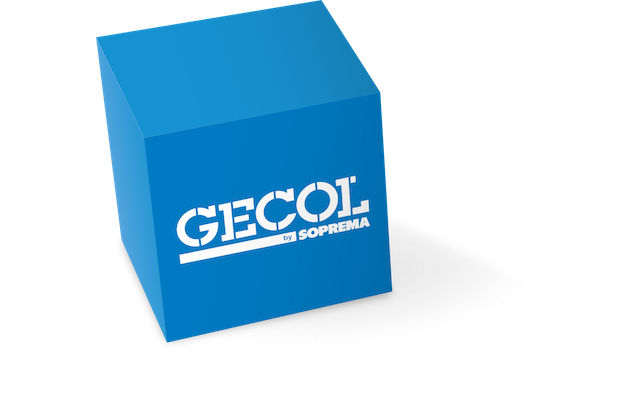25 Jul Preparation of the substrates
By definition, a construction substrate is the surface on which we will apply a mineral, organic, inorganic or paint coat.
Preliminary analysis
Substrates are classified according to their stability:

Depending on the stability of these substrates, for ceramic cladding we must use:
- Unstable Class 2 substrates: S1 deformable or S2 very deformable cementitious adhesives.
- Unstable Class 3 substrates: Adhesives in Dispersion D and Reactive Resin Adhesives R, or using alternatives such as floating screeds on flooring or separation layers in cladding.
The age of the mortars and concretes used in leveling layers, compression layers or floating screeds.
- They are considered to be Class 1 substrates if they have completed the 28-day hydration process.
- They are considered to be Class 2 substrates if they are less than 28 days old and have a superficial humidity of less than 3%, due to which we will use deformable S1 and/or S2 adhesives.
- Class 3 substrates: in the case of humidity levels of more than 3%, we will use water-resistant primers and S1 and/or S2 deformable adhesives.
The following must be taken into account in relation to the laying surface:
- Surface cohesion.
- Behavior in the presence of water or humidity.
- Chemical compatibility with the adhesive.
- Degree of cleanliness and absence of materials disposed between surfaces and the adhesive.
Observing these considerations, we will have limitations in some surfaces:
- On surfaces such as gypsum, plaster, anhydrite, etc. we will use special adhesives for these types of substrates (GECOL Yeso, GECOL Porcelánico yeso). In order to use another type of adhesive, it is obligatory to previously apply a base coat of GECOL Primer-TP.
- Wood is considered a Class 3 substrate due to its sensitiveness to humidity and temperature.
It may also be treated and require a bridge joint to install it using S1 and/or S2 deformable cementitious adhesives.
- Metals are also Class 3 substrates, due to which we will use reactive resin adhesives R (G#color Junta epoxi)
- Direct installation over asphalt components using cementitious adhesives is not possible due to the chemical aggressiveness of the cement.
- If there is salt migration through the laying surface, C2F-type reactive resin or cementitious adhesives must be used.

Another very important point is the surface absorption index:
- In the case of very absorbent substrates, it is advisable to apply a sealant coat of GECOL Primer-TP diluted with water in the ratio 1:3.
- On non-absorbent surfaces, we will use flexible adhesives with added redispersable resins for optimum chemical adherence thereto.
Technical considerations

A series of parameters must previously be observed in all substrates.
- Verification of flatness
Measured with 2 m ruler, the defect must not exceed a thickness of 5 mm.
The thickness allowed by the adhesive for the application to be executed must always be considered.
In the case of greater thicknesses, we recommend the previous regularization of said substrate.
- Verification of porosity
If, on wetting the substrate, On the contrary, if the water is absorbed in less than 1 minute, the substrate will be considered to be very absorbent, due to which we will firstly apply a base coat of GECOL Primer-TP diluted with water in the ratio 1:3.
If, on the contrary, the water slides, it is considered a non-absorbent substrate, due to which we recommend using a flexible adhesive with redispersable resins.
- Verification of hardness
On scratching with a metallic element (punch), it is considered to be resistant, is the scratch is superficial. Otherwise, we recommend removing the inconsistent part.
In the case of powdery substrates, it is advisable to apply a hardening coat of GECOL Primer-TP diluted with water in the ratio 1:3.
- Verification of hardness
The adherence of old tiles in applications on old tilings, replacing them where necessary or filling with specific mortars (GECOL Sec, GECOL Revoco).
- Verification of cleanliness
All substances such as varnishes, greases and waxes must be removed using GECOL Desincrustante diluted with water in the ratio 1:5.
Likewise, all inconsistent pellicular coats less than 3 mm thick.
Plaster, traces of mortar or dust that must be removed using a spatula or pressurized water.
If feasible, it is advisable to apply a hardening coat of GECOL Primer-TP diluted with water in the ratio 1:3.
Remove all bituminous, epoxidic or polyurethane mixtures.
- Verification of humidity
As commented in the preceding section, the application of cementitious adhesives to substrates with a humidity greater than 3% is not advisable.
Therefore, it is advisable to respect the stabilization times of each of the substrates, as well as the removal of rising damp with a good waterproofing treatment.

- Humedad
Como se ha comentado en el apartado anterior, no se recomienda la aplicación de adhesivos cementosos sobre soportes con una humedad superior al 3%.
Por este motivo, es aconsejable respetar los tiempos de estabilización de cada uno de los soportes, así como la eliminación de remontes de humedad capilar, con un buen tratamiento impermeabilizante.
Recommended products
Additives
Mortars
Warnings: The data provided by this Constructive Solution were prepared based on standard onsite installation processes. However, we recommend that you consult our Technical Department in the event of any specific circumstance. info@gecol.com






